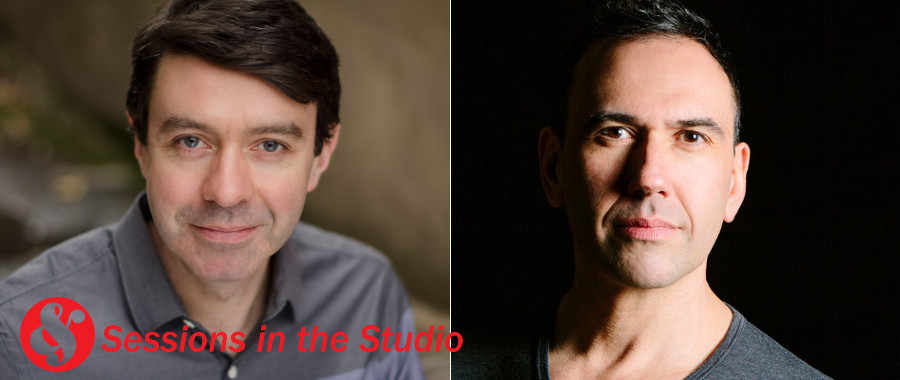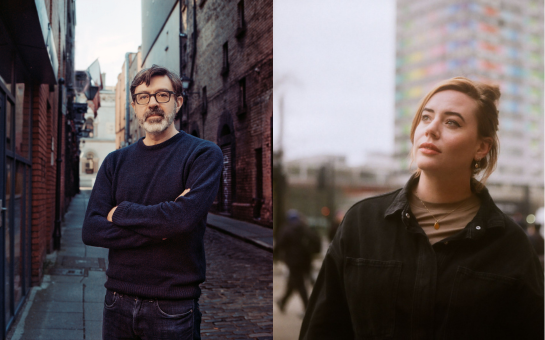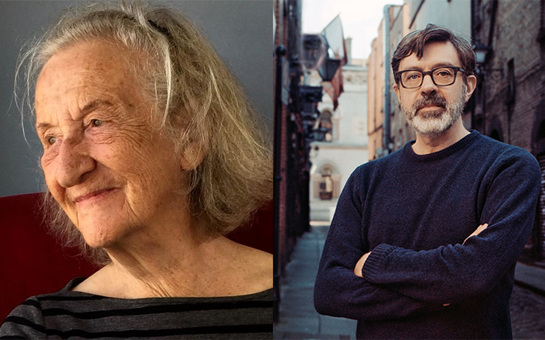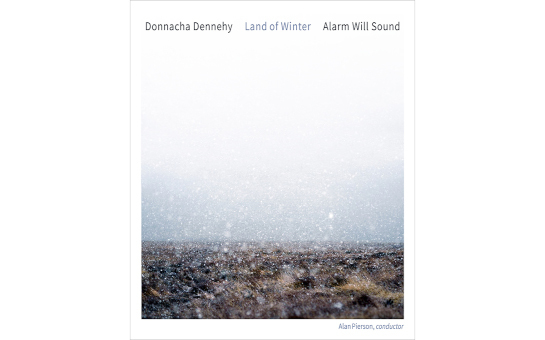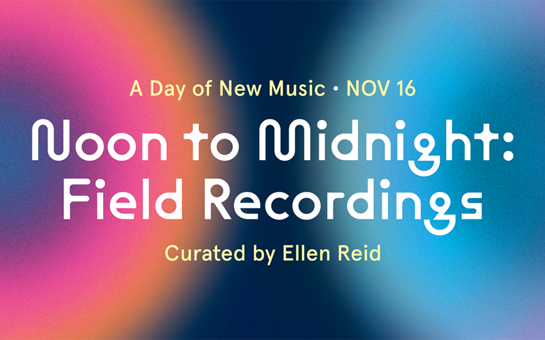In conversation with Composers and Choreographers
Crane Version II by Donnacha Dennehy is the inspiration for Nicolo Fonte's latest creation — Crane/ing — for Nevada Ballet Theatre, featuring members of the Las Vegas Philharmonic conducted by its music director, Donato Cabrera.
TICKETS: February 16, 17 2019
WATCH: Fonte talks about the creative process of Crane/ing
LISTEN: Spotify
Fonte is known for his daring and original approach to dance. His work has been noted by critics for a unique movement language as well as a highly developed fusion of ideas, dance and design. Born in Brooklyn New York, Fonte started dancing at the age of 14. He studied at the Joffrey Ballet School and San Francisco Ballet while completing a Bachelor Degree of Fine Arts at SUNY Purchase. Upon graduation Fonte danced with Peridance in NYC and Les Grands Ballets Canadiens in Montreal, dancing in the works of Balanchine, Tudor, Kudelka, and Spaniard Nacho Duato. Fonte subsequently joined Duato's Compañia Nacional de Danza in Madrid and forged a strong identity in the Spanish company for seven years — for both his dancing and his choreography. Since then Fonte has created works worldwide including Dutch National Ballet, Stuttgart Ballet, Royal Danish Ballet, Göteborg Ballet, Les Ballets de Monte Carlo, Pacific Northwest Ballet, Houston Ballet, Aspen Santa Fe Ballet, and BalletX. Fonte is currently the Resident Choreographer for Ballet West, in Salt Lake City, and Oregon Ballet Theatre.
IN CONVERSATION:
Donnacha, what was the creative spark for this scores composition?
DD: The creative spark for Crane was an ambitious collaborative concept, entitled Crane Ballet — an urban/industrial ballet, to involve a live orchestral performance and the choreographed movement of cranes located at various building sites across Dublin skyline during the apex of Dublin's construction boom. Although the costs and practicalities of the choreography eventually proved insurmountable, it happily set the conditions for the birth of this stand-alone piece.
Nicolo, what lead you to Dennehy's composition?
NF: Like many choreographers I am constantly in search of exciting, beautiful and cutting-edge music for new and different commissions. Once I heard Crane I was hooked! As it didn't work out for that other project, I couldn't be happier that it worked out so beautifully for NBT.
When choosing music for a dance creation, what elements and factors of a score speak to your choreographic creativity?
NF: First and foremost it has to have some "danceable" elements. Now that is a very broad statement and of course can be viewed as very subjective criteria. But for me the music creates a structure to springboard from and since I am very interested in theatrical extremes I usually find myself very attracted to music that combines both a strong rhythmical base but also with enough lyrical contrast. Crane certainly fulfilled that for me.
Can you describe what elements of the Crane score triggered the desire to explore the score as a match for your choreographic voice and suitability to NBT?
NF: I loved the intensity of the score. It seemed unapologetically big and then it just drops off in to the ether. I love that combo of both earth and air and it seemed to work beautifully with my idea for the piece which has something to do with soaring above and seeing below, in all senses of those words. I wanted to take a risk and be bold with the choice of music (as with all other aspects of the choreography too) since it is my first commission from Roy Kaiser with NBT and it will be my first introduction to the Las Vegas ballet audiences. Crane, for full orchestra, is a great contemporary score — and to have it be performed live with orchestra for this new ballet (titled Crane/ing) is wonderful. Live musical accompaniment is something akin to my own sensibility of still working within the traditions of classical ballet but like Crane, with a 21st-century aesthetic.
When choreographing for NBT did you build on a vocabulary as a foundation for the aesthetic of the creation, select a specific section of the score or simply begin choreographing to the start of the composition?
NF: I definitely began the choreographic process mostly just on the spot. I did a little preparation in terms of creating a small phrase to teach and then, with the dancers, just kept building on that vocabulary. But Crane most definitely informed what that language was going to be. So the vocabulary was developed in tandem with the beginning of the score and moved forward from there.
Before you commenced in the studio with the NBT dancers can you share some of the dialogue you shared regarding insight into the score and your vision for the shape of the ballet?
NF: As I was initially interested in both versions of the score Donnacha and myself mostly just went back and forth about the pros and cons of using either the shorter or longer version. He basically said you (I) have to decide what I want — an ending that "evaporates in the sky" (shorter version) or a "bang back down to earth" (longer version). I went with the shorter version.
DD: Nicolo seemed really enthusiastic about the piece, and we basically discussed two options of doing it, one that ends quietly up in the ether as it were and another that lands back on earth with a real bang. My favorite version is actually the shorter one that ends in the sky, and Nicolo felt that was best suited to the concept that he had for the choreography too.
Donnacha, for previous ballets have you always spoken with the choreographer before they create and if not can you share your thoughts on the experience of seeing production for the first time as an audience member?
DD: It depends. I've always been open to discussing with the choreographer in advance, if they want it, and other times I just leave them to it! Sean Curran recently did a wonderful choreography to my percussion quartet, Surface Tension.
He did ask some questions about the piece, and whether some of his interpretations were apposite or not, but other than that I did not really get involved. I was going to attend rehearsals along the way, but in the end I just decided to turn up to the opening night at BAM and be surprised. It was a very pleasant surprise — I even heard new things in the music because of the way it was choreographed. In fact I heard a kind of gentle loneliness in it that I had not even known was there before.
Nicolo, do you have a personal library of scores, a wish list, that is the foundation of a concept for a production you hope to create or do you await commissions and then explore music that gels with an Artistic Director's request and even the other musical content in a program?
NF: I certainly do bank a lot of music. But I wouldn't say that I have a wish list of scores (plural) that I already have concepts for. There might be one but more often than not it is more of a collaborative effort with artistic directors and other members of my design team in search for the right score for the right place or company. It is very contextual.

